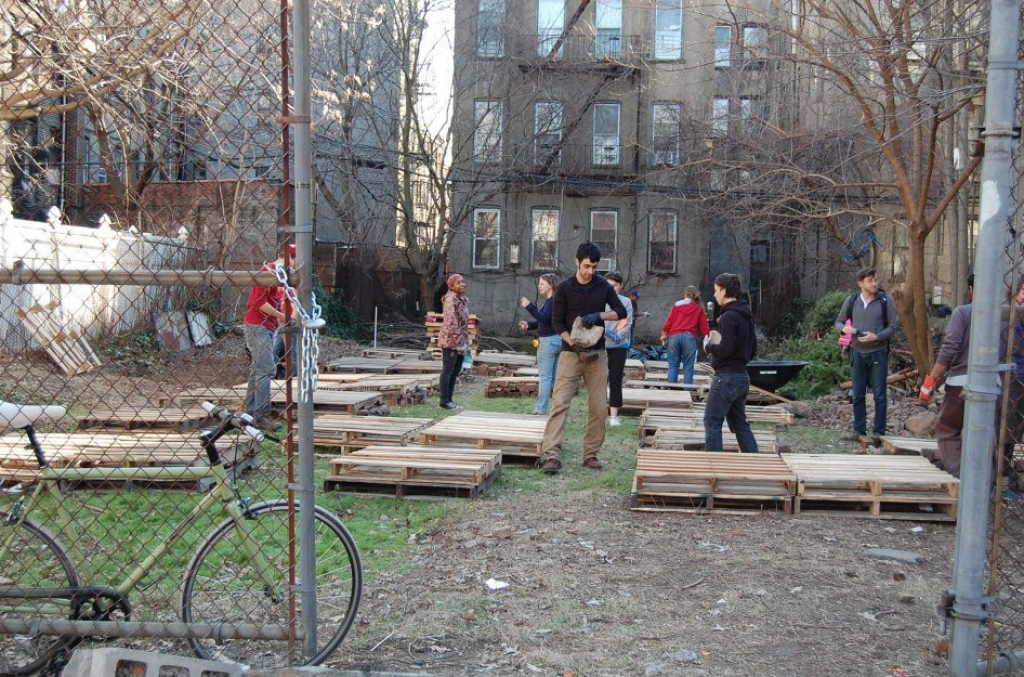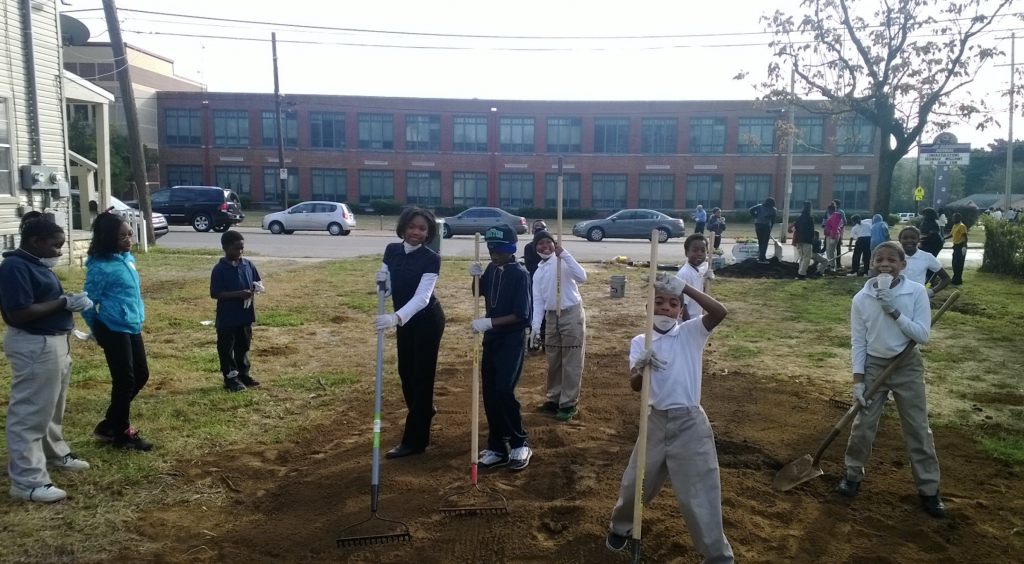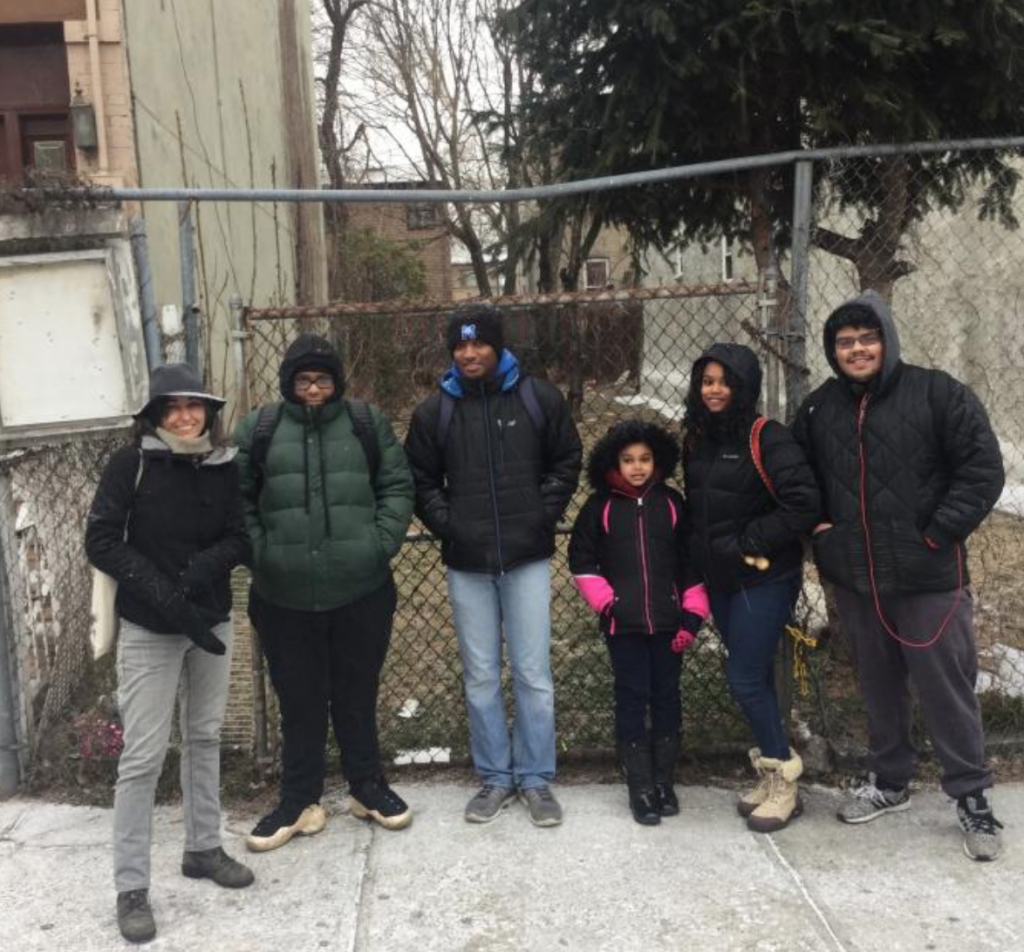If you walk around any city or town in America, you’ll see them. If you have one in your neighborhood, you’ve certainly wondered how it came to be there. If you’re like many in our ioby community, you imagine all the great things you could do with it.
Why, it’s the ubiquitous vacant lot!
Often equal parts problem and possibility, vacant lots account for around 16 percent of land area in large US cities. The Environmental Protection Agency defines them this way:
“A vacant lot is a neglected parcel of property that has no buildings on it. In many cases, houses were on these lots, but as they fell into disrepair they were burned or demolished. Vacant lots are an issue of concern because they tend to attract or be subjected to illegal dumping of litter and other solid wastes. Vacant lots in urban communities are often contaminated with hazardous wastes such as lead, cadmium, arsenic and asbestos which result in unsafe conditions for children and adults. These vacant lots are not just unsightly blights on the urban landscape and breeding grounds for rats, they are a wasted resource. They disrupt a neighborhood’s sense of community and lower property values. Vacant lots are also an environmental justice issue since there are significantly more vacant lots in poorer neighborhoods. The main goal of vacant lot projects and policies is to reclaim these lots and move them into productive use.”

[ioby project leader Tami Johnson on a vacant lot in Gowanus, Brooklyn]
If you live, work, or attend school or church near a vacant lot and would like to help put it to better use, you’ve come to the right place. ioby leaders have raised money and support to turn neglected land in their neighborhoods into rain gardens, educational parks, and community gathering spaces, among other great things. While each of these projects had different goals and came about in its own way, they all started with the same first step—by answering the question:

[A volunteer day at the formerly vacant 462 Halsey Community Garden in Bed Stuy, Brooklyn.]
How do I find out who owns this vacant lot?
1) Ask Uncle Sam
Each municipality has its own way of keeping records, but a good first stop is the office or website of one of these in your city or town:
-
- Property assessor
-
- Tax assessor
-
- County recorder
-
- City or town hall
- Department of city planning
Supply these entities with the address of the lot you’re interested in, and they’ll usually be able to give you the name and mailing address of the person, family, or organization that owns it; sometimes even a phone number.

[Students break ground at Memphis’ Carnes Gardens, a former vacant lot across from their elementary school.]
2) Ask the neighbors
Sometimes property records are unavailable or incorrect. This can happen for any number of reasons, including complicated ownership histories, the loss of records through the years, or simply human data entry error. If your city can’t easily furnish you with owner info, try knocking on some doors and asking the people who live near the lot. People might be hesitant to tell you what they know if they think you’re trying to collect on a debt or issue a violation, so be sure to explain that you live in the neighborhood too and are interested in cleaning up the lot so the community can use it. Usually, once they know your intentions, neighbors will gladly give you what info they can.

[Members of the Nature Conservancy’s LEAF program with the vacant lot that would become Warwick Street Community Garden in East New York, Brooklyn.]
3) Write a letter or leave a note
If you’re still coming up dry, try a tried-and-true hard copy tactic:
-
- Send a letter to the address of the lot, with “Owner” as the addressee. Depending on the information they have on file, the post office may forward it to the owner’s current residence. Hopefully you’ll get a call back.
- If there’s any type of structure on or around the lot—the remains of a building, a pile of construction materials, a fence—try taping a note to it. You can sign it anonymously (“your neighbor”), and leave your email address instead of your phone number, if you prefer.
In both of these cases, your message doesn’t have to go into great detail. You can just say that you live nearby and are interested in the possibility of turning the lot into a green space for the community. Therefore, you’re hoping to find out who owns the property.
[San Diego’s HACER Project Gilliam Family Community Space, formerly a vacant lot.]
Types of ownership
Those are some of the top ways to find information about land ownership. Now, what kinds of owners might you be trying to contact?
Individuals and families
Often, vacant lots are owned by individuals or families who’ve moved out of the neighborhood but haven’t yet make arrangements for the property they left behind. Other times, the owner is ill or has passed away, and their next of kin has been left with the lot. There are as many different personal scenarios as there are vacant lots! But once you can connect a name to the property, you’ve got a good start.
Banks
Sometimes, you’ll find that a vacant lot isn’t owned by a person, but rather by a bank or other lending organization. If a bank is involved, try contacting their REO (real estate owned) department or asset management department and explaining your interest in the property.
The government
Yet another scenario you might come across: the lot you’re wondering about is government property, aka publicly owned land. The NYC-based group 596 Acres maintains a list of organizations around the country (and world) that help resident leaders connect with their local government to start turning vacant publicly owned land into productive community space.
Ready to transform the vacant lot? We got ya covered! Download the free guide below:
Or, here are some other next steps
If you’ve succeeded in finding the abandoned property’s owner, congrats! You can cross Step One off your list.
Now what?
Sit tight! Next week, we’ll post a step-by-step guide to turning a vacant lot into a community green space, courtesy of some very wise ioby leaders.
In the meantime, you can flip through these great community garden projects for inspiration—they’re all in former vacant lots!
-
- Eagle Slope Community Garden, South Bronx, NYC
-
- Hydrangea Garden Community Plaza Park, Kansas City, MO
- Project Green Space, Niagara Falls, NY

